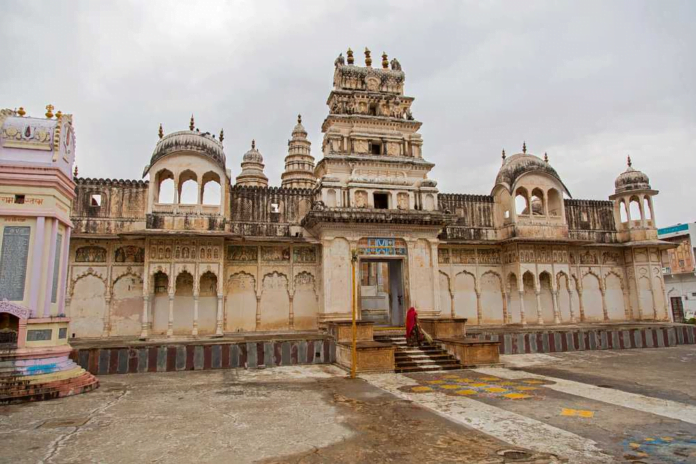
Must visit the place of timeless elegance and Architectural splendor
Dimple Arora reports on Man Mahal in Pushkar
Situated in the serene town of Pushkar, Rajasthan, the Man Mahal stands as a majestic architectural marvel that reflects the culturally rich heritage of the region. This grand palace-turned-heritage hotel holds a significant place in the history and tourism landscape of Pushkar. It is the tremendous royal home built in the city. The palace is close to another famous attraction of Pushkar, the sacred Sarovar Lake. It is on the east of the lake and provides clear and breathtaking views of many temples around the lake.
Historical Significance:
The Man Mahal, also known as the Maharaja Man Singh Palace, bears witness to the grandeur of Rajput architecture. Built during the reign of Raja Man Singh I of Amber in the late 16th century, this imposing structure served as a royal guest house for visiting dignitaries and members of the royal family. Its historical significance lies in its association with the Rajput rulers and the regal heritage of the region. Man Mahal was built to serve as a city guest house for Raja Man Singh I for visiting the holy city of Pushkar.
Architectural Splendor:
The palace’s architecture is a delightful fusion of Rajput and Mughal styles, showcasing intricate designs, exquisite carvings, and ornamental motifs. The imposing facade, adorned with beautiful balconies, domes, and arches, displays the opulence and grandeur of the bygone era. The palace’s design reflects the fusion of Hindu and Islamic architectural elements, creating a captivating visual spectacle.
Preservation and Restoration:
Efforts aim to preserve and restore the Man Mahal, ensuring its architectural and historical integrity. The palace has been transformed into a heritage hotel that allows visitors to experience the charm and elegance of the past while enjoying modern comforts. The restoration work has been carried out meticulously, maintaining the original aesthetics and ambiance of Man Mahal. State development corporation of Tourism maintains the Man Mahal.
Lake View and Serene Surroundings:
One of the notable features of the Man Mahal is its strategic location on the eastern bank of the picturesque Pushkar Lake. The palace offers breathtaking panoramic views of the lake and the surrounding hills. Visitors can soak in the tranquil atmosphere, enjoy the gentle breeze, and witness the captivating beauty of the landscape.
Tourist Attraction and Cultural Hub:
The Man Mahal has become a prominent tourist attraction in Pushkar, attracting visitors from around the world. The palace offers a glimpse into the royal lifestyle and also serves as a cultural hub. It hosts various cultural events, including music and dance performances, folk art exhibitions, and traditional Rajasthani festivities. These events showcase the vibrant cultural heritage of Rajasthan and provide a platform for local artists to showcase their talent.
Exploring Pushkar’s Charms:
The Man Mahal’s strategic location makes it an ideal base for exploring the charms of Pushkar. Visitors can embark on a journey to explore the renowned Brahma Temple, stroll through the bustling streets of the town’s vibrant bazaars, and experience the tranquility of Pushkar Lake and its sacred ghats. Pushkar cattle fair, lakes and entertaining camel rides are some favorite places of visitors.
Transport availability:
Reach Man Mahal using a taxi by road and as located centrally. Also, many luxury buses are available from Ajmer. Through trains, one can opt for Ajmer railway station. It is around 15 km from the Mahal. It provides connectivity to major stations in cities like Jaipur, Mumbai, Ahmedabad, Agra, Pali, and Delhi. By air, the nearest airport is in Jaipur which is 148 km away and has domestic connectivity from places like Mumbai and Delhi.
The Man Mahal in Pushkar stands as a testimony to the architectural splendor and royal legacy of Rajasthan. Its grandeur, historical significance, and captivating location make it a must-visit destination for those seeking a glimpse into the regal past and the cultural vibrancy of the region.

